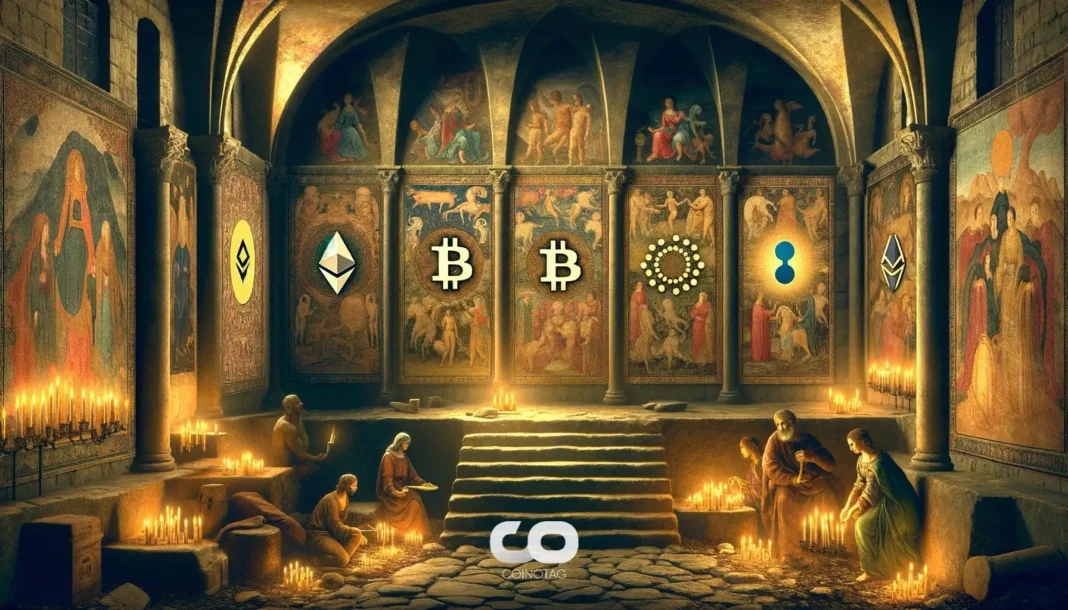| COINOTAG recommends • Exchange signup |
| 💹 Trade with pro tools |
| Fast execution, robust charts, clean risk controls. |
| 👉 Open account → |
| COINOTAG recommends • Exchange signup |
| 🚀 Smooth orders, clear control |
| Advanced order types and market depth in one view. |
| 👉 Create account → |
| COINOTAG recommends • Exchange signup |
| 📈 Clarity in volatile markets |
| Plan entries & exits, manage positions with discipline. |
| 👉 Sign up → |
| COINOTAG recommends • Exchange signup |
| ⚡ Speed, depth, reliability |
| Execute confidently when timing matters. |
| 👉 Open account → |
| COINOTAG recommends • Exchange signup |
| 🧭 A focused workflow for traders |
| Alerts, watchlists, and a repeatable process. |
| 👉 Get started → |
| COINOTAG recommends • Exchange signup |
| ✅ Data‑driven decisions |
| Focus on process—not noise. |
| 👉 Sign up → |
-
Ripple is poised for potential regulatory approval from New York to launch its RLUSD stablecoin, marking a significant entry into the burgeoning market.
-
The stablecoin sector, already valued at nearly $200 billion in 2024, continues to expand rapidly as major players enter the field.
-
According to Varun Paul, a senior director at Fireblocks, “Stablecoins account for over half of the platform’s trading volume,” underscoring their importance in the crypto ecosystem.
Ripple seeks approval for RLUSD stablecoin launch, tapping into a booming $200 billion market, pivotal for crypto payments and trading.
Ripple’s RLUSD: A New Player in the Expanding Stablecoin Market
Ripple’s anticipated launch of the RLUSD stablecoin signifies a strategic move into the expanding stablecoin market. As the new player, RLUSD is set to be issued through Standard Custody & Trust Company, which is directly licensed by the New York Department of Financial Services (NYDFS). The approval process could culminate as soon as December 4, offering Ripple an opportunity to tap into the rapidly growing demand for stablecoins, which are increasingly vital for enhancing liquidity in cryptocurrency transactions.
The Growing Significance of Stablecoins in the Cryptocurrency Ecosystem
Stablecoins, primarily pegged to fiat currencies such as the US dollar, have become synonymous with stability amid the often volatile crypto markets. They serve as essential tools for traders and investors, enabling seamless transactions and conversions without significant price fluctuations. The current market boom, driven by both retail and institutional crypto adoption, has positioned stablecoins as a backbone for payments and trading, streamlining cross-border transactions.
Investment Confidence in Stablecoins Amid Regulatory Developments
With increasing participation from fintech giants like PayPal and Robinhood, there is a growing confidence in the sustainable future of stablecoins. The NYDFS’s upcoming decision is part of a broader trend where regulatory bodies globally are looking to provide clearer frameworks for stablecoin operations, ensuring they align with financial safety and consumer protection protocols. This regulatory clarity, in turn, boosts investor confidence in stablecoin mechanisms, potentially leading to further market expansion.
| COINOTAG recommends • Professional traders group |
| 💎 Join a professional trading community |
| Work with senior traders, research‑backed setups, and risk‑first frameworks. |
| 👉 Join the group → |
| COINOTAG recommends • Professional traders group |
| 📊 Transparent performance, real process |
| Spot strategies with documented months of triple‑digit runs during strong trends; futures plans use defined R:R and sizing. |
| 👉 Get access → |
| COINOTAG recommends • Professional traders group |
| 🧭 Research → Plan → Execute |
| Daily levels, watchlists, and post‑trade reviews to build consistency. |
| 👉 Join now → |
| COINOTAG recommends • Professional traders group |
| 🛡️ Risk comes first |
| Sizing methods, invalidation rules, and R‑multiples baked into every plan. |
| 👉 Start today → |
| COINOTAG recommends • Professional traders group |
| 🧠 Learn the “why” behind each trade |
| Live breakdowns, playbooks, and framework‑first education. |
| 👉 Join the group → |
| COINOTAG recommends • Professional traders group |
| 🚀 Insider • APEX • INNER CIRCLE |
| Choose the depth you need—tools, coaching, and member rooms. |
| 👉 Explore tiers → |
The Ripple Ecosystem: XRP and RLUSD’s Distinct Roles
While RLUSD aims to solidify Ripple’s position in the stablecoin market, the company’s native token, XRP, embodies different strategic functionalities, particularly in facilitating cross-border transactions. Despite facing ongoing scrutiny from the US Securities and Exchange Commission, XRP has shown resilience, recently peaking at prices not seen in six years. This dual strategy places Ripple in a unique position within the crypto landscape, catering to both transactional stability and regulatory compliance.
Conclusion
The impending launch of Ripple’s RLUSD stablecoin highlights the growing importance of stable assets within the cryptocurrency market, poised to enhance transaction efficiencies and liquidity. As regulatory landscapes evolve, stablecoins are likely to play an increasingly pivotal role in the financial ecosystem. The positive trend in stablecoin transactions signifies a robust future, aligning with broader crypto market growth, while Ripple seeks to navigate the regulatory hurdles of its XRP token.
| COINOTAG recommends • Exchange signup |
| 📈 Clear interface, precise orders |
| Sharp entries & exits with actionable alerts. |
| 👉 Create free account → |
| COINOTAG recommends • Exchange signup |
| 🧠 Smarter tools. Better decisions. |
| Depth analytics and risk features in one view. |
| 👉 Sign up → |
| COINOTAG recommends • Exchange signup |
| 🎯 Take control of entries & exits |
| Set alerts, define stops, execute consistently. |
| 👉 Open account → |
| COINOTAG recommends • Exchange signup |
| 🛠️ From idea to execution |
| Turn setups into plans with practical order types. |
| 👉 Join now → |
| COINOTAG recommends • Exchange signup |
| 📋 Trade your plan |
| Watchlists and routing that support focus. |
| 👉 Get started → |
| COINOTAG recommends • Exchange signup |
| 📊 Precision without the noise |
| Data‑first workflows for active traders. |
| 👉 Sign up → |
| COINOTAG recommends • Members‑only research |
| 📌 Curated setups, clearly explained |
| Entry, invalidation, targets, and R:R defined before execution. |
| 👉 Get access → |
| COINOTAG recommends • Members‑only research |
| 🧠 Data‑led decision making |
| Technical + flow + context synthesized into actionable plans. |
| 👉 Join now → |
| COINOTAG recommends • Members‑only research |
| 🧱 Consistency over hype |
| Repeatable rules, realistic expectations, and a calmer mindset. |
| 👉 Get access → |
| COINOTAG recommends • Members‑only research |
| 🕒 Patience is an edge |
| Wait for confirmation and manage risk with checklists. |
| 👉 Join now → |
| COINOTAG recommends • Members‑only research |
| 💼 Professional mentorship |
| Guidance from seasoned traders and structured feedback loops. |
| 👉 Get access → |
| COINOTAG recommends • Members‑only research |
| 🧮 Track • Review • Improve |
| Documented PnL tracking and post‑mortems to accelerate learning. |
| 👉 Join now → |






